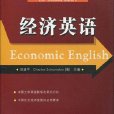編輯推薦
《經濟英語》:中國大學英語教學改革的方向;中國社會經濟發展的必然要求。
作者簡介
編者:陳建平 (美國)肖梅克(Charles Schomaker)
目錄
Unit 1 The Great Depression
Unit 2 Economics
Unit 3 Economic Geography
Unit 4 Sloballzation
Unit 5 World Trade Organization
Unit 6 Regional Economic Integration
Unit 7 PEST Analysis
Unit 8 "P" (Political) of PEST
Unit 9 "E" (Economics) of PEST
Unit 10 "S" (SoclaI-Culturel] of PEST
Unit 11 "T" (Technology) of PEST
Unit 12 Entering Foreign Markets
Unit 13 Culture in International Business
Apendix Ⅰ An Overvlew of World Logal Systems
Appendix Ⅱ An Overview of Laws of Untied States and China
序言
本書旨在幫助讀者學習經濟領域中的專業英語,掌握一定的英文經濟術語、商務辭彙、法律辭彙及文化辭彙,熟悉和了解中西方經濟文化差異,深刻領會經濟英語在語義、語用、語篇等方面的特殊性及其變化規律,提高專業英語技能。通過對本書的學習,讀者還可在專業英語的語境中較為系統地了解和把握個體經濟學、經濟地理、國際經濟組織、經濟一體化、PEST分析等方面的專業基礎知識。本書共由13個單元組成,在編寫上具有以下特點:
1.在結構編排上,呈現立體式趨勢。各個單元學習前首先明確了重要概念和學習目標,課後配有參考文獻、閱讀書目、課文注釋及課後專項練習,便於教師有效地組織課堂教學及學生自主學習。
2.在內容體系上,注重英語知識和專業知識的有機統一,使學生能在專業英語語境中較為系統地學習相關經濟專業知識,強化專業英語技能。
3.課文注釋注重背景知識介紹。各個單元較為詳細地介紹了相關專業背景知識,並對專有名稱、專業辭彙、難詞及難點進行中文解釋,以幫助學生更好地理解課文內容,拓展知識面。
4.課後專項練習注重學習實效。每個單元按學習要求配有詞句翻譯、填空、正誤判斷、問題討論等多項練習,便於學生複習和檢驗所學的語言知識和專業知識。
本書可作為高等院校英語專業、商務英語專業及經濟、管理類專業的經濟英語或商務英語教材,也可作為經濟類專業的補充教材或教學參考用書,此外,還可用作涉外經濟部門的專業英語培訓教材或自學參考書。
文摘
Fourth causerevolves around trade declineand theUnitedStatesSmoot-Hawley Tariff Act13. Many economists argue that the sharp decline ininternational trade after 1930 helped to worsen the depression.This wasespecially true for countries which were dependent on foreign trade.
Most economists assign the 1930 American Smoot-Hawley Tariff Act part ofthe blame for worsening the depression by seriously reducing international tradeand causing retaliatory regulations in other countries. The average ad valorem14rate of duties on dutiable imports for 1921-1925 was 25.9% but under theSmoot-Hawley tariff it jumped to 50% in 1931-1935.
Purchases in USA
In the 1920s, in the United States household there was widespread use ofcredit to purchase businesses and factories and the use of home mortgagesIs andcredit purchases of automobiles, furniture and even some stocks, boostingspending. But this created consumer and commercial debt. People and firms thatwere deeply in debt when a price deflation occurred or demand for their productdecreased faced serious trouble——they risked default. Many people drastically cutcurrent spending to keep up time payments, thus lowering demand for newproducts. Firms began to fail as construction work and factory orders plunged.Massive layoffs occurred, resulting in unemployment rates of over 25%. Bankswhich had financed the debt began to fail as debtors defaulted on debt and bankdepositors became worried about their money and began massive withdrawals.
At its nadir, the Depression was a "Catch Twenty-Two" 16: Workers wereidle because firms would not hire them to work; firms would not hire workers towork because they saw no market for goods; and there was no market for goodsbecause workers had no work——no incomes to spend.
After the panic of 1929, and during the first 10 months of 1930, 744United States banks failed. In all, 9,000 United States banks failed during thedecade of the 1930s. By 1933, depositors saw $140 billion of their depositsdisappear due to uninsured bank failures. As bank failures snowballed desperatebankers tried calling in loans which the borrowers did not have time or money torepay. With future profits looking poor, capital investment and constructionslowed or completely ceased.

